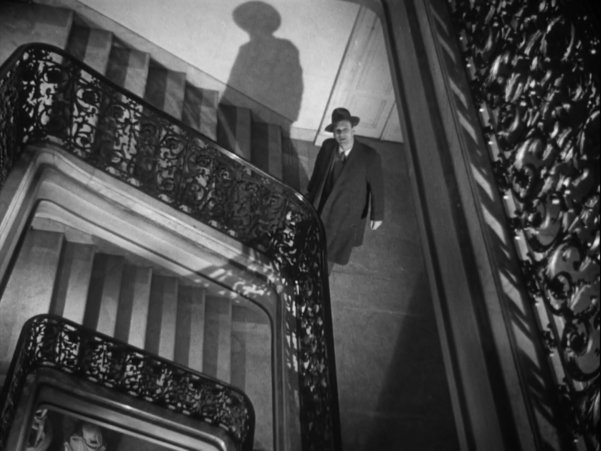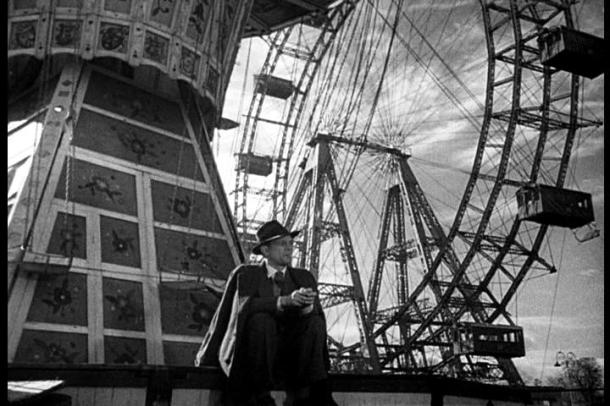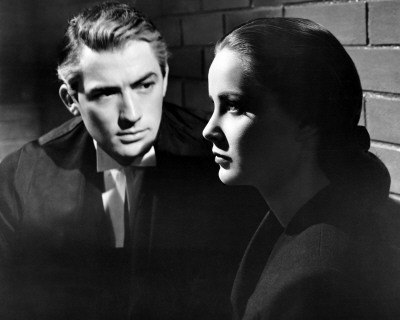
The Third Man (1949)
Directed by Carol Reed
London Film Productions
OK. True confessions time.
I don’t really like the music in The Third Man.
Don’t get me wrong, it’s catchy as hell and does a good job of establishing the post-war Vienna setting, but I find it wildly at odds with the mood of some of the dramatic scenes. After the first couple of reels I was sick of it. Not because it’s a bad tune, but because of the way it was used in the film.
I know I’m in the minority with this opinion. The music is one of the most commonly praised aspects of the film. The simple zither melodies in The Third Man made the previously unknown Viennese musician Anton Karas internationally famous. After the film’s release, “The Harry Lime Theme” — which recurs throughout the picture — sold half a million copies and worldwide sales of zithers reportedly skyrocketed (from their previous sales position of “next to nothing,” one presumes).
I first saw The Third Man about a decade ago. I liked it, but I didn’t think it was a masterpiece.
Recently, I’ve seen more films by the director, Carol Reed, and better come to appreciate his talent. Three years ago I reviewed Odd Man Out (1947) and said that I thought it was better than The Third Man. I wrote, “[James] Mason is a more compelling central presence than any of the actors are in The Third Man, and the music, cinematography, editing, and direction are all tighter in Odd Man Out.”
Last year I reviewed The Fallen Idol (1948). With that review I didn’t take another swipe at The Third Man, and simply said that Odd Man Out, The Fallen Idol, and The Third Man are “as brilliant a trio of films as any director has ever made.”
I stand by that statement, and I liked The Third Man a lot more this time than the first time I watched it. I don’t like it quite as much as The Fallen Idol, which had more personal resonance for me, but it’s a brilliant film.
Three films in a row that are as good as Odd Man Out, The Fallen Idol, and The Third Man is an extremely rare feat, and only the greatest of directors have ever pulled it off (like Billy Wilder, Francis Ford Coppola, Martin Scorsese, Akira Kurosawa, Alfred Hitchcock, and Stanley Kubrick).
Like The Fallen Idol, The Third Man is a collaboration between Reed and writer Graham Greene. It stars Joseph Cotten as Holly Martins, an American writer of popular western novels. Holly Martins arrives in Vienna, looking for his old friend Harry Lime, only to find out that Harry Lime was hit by a car and died a few days before his arrival.
At Harry’s funeral, Holly Martins meets a pair of British Army Police, the stiff-upper-lipped Major Calloway (Trevor Howard) and the more rough-and-tumble Sergeant Paine (Bernard Lee). (Incidentally, if you’ve ever seen a James Bond film from the ’60s or ’70s, you’ll recognize Lee as Bond’s superior, “M.”)
Holly Martins also meets Harry Lime’s girlfriend, the beautiful actress Anna Schmidt, who is played by Alida Valli — she’s listed in the credits as simply “Valli,” as she was in Hitchcock’s The Paradine Case (1947) and the Frank Sinatra shmaltz-fest The Miracle of the Bells (1948).
Eyewitness reports of Harry Lime’s death don’t add up — did only two men spirit his body away from the scene of the accident, or was there a “third man”? Holly Martins begins to suspect that there is more to the story than he’s been told.
Joseph Cotten has the most screen time in The Third Man, but the presence of the mysterious Harry Lime and the character of postwar Vienna both dominate the film.
Like Germany and Berlin, Austria and Vienna were broken into zones after World War II — British, American, French, and Russian. And just like in Berlin, the black market was booming.
Harry Lime was deeply involved in the black market, and in the worst way possible. He sold penicillin, which was desperately needed, but he diluted it to make more money, and many children and adults died as a result.
Orson Welles shows up late in the film to explicate Harry Lime’s philosophy to Holly Martins, and it’s these lines that are some of the film’s most enduring.
Look down there. Would you really feel any pity if one of those dots stopped moving forever? If I offered you twenty thousand pounds for every dot that stopped, would you really, old man, tell me to keep my money, or would you calculate how many dots you could afford to spare? Free of income tax, old man. Free of income tax — the only way you can save money nowadays.
Welles is a magnetic presence, and his nihilistic philosophy in The Third Man is seductive. I’ve even heard his words quoted as a celebration of death and destruction. (I suppose that like all great art, his speech is what you make of it.)
You know what? I take back what I said about the music. I started writing this review last night, and woke up with “The Harry Lime Theme” in my head. I’ve been listening to the soundtrack all morning while finishing this review.
I still find it at odds with the mood of the film, but perhaps a delicious sense of irony was Reed’s intention.
The Third Man is a brilliantly shot, brilliantly acted, and wonderfully involving film.
After three amazing films in a row, I’m really looking forward to seeing Carol Reed’s next picture, Outcast of the Islands (1951), which no one ever talks about.






